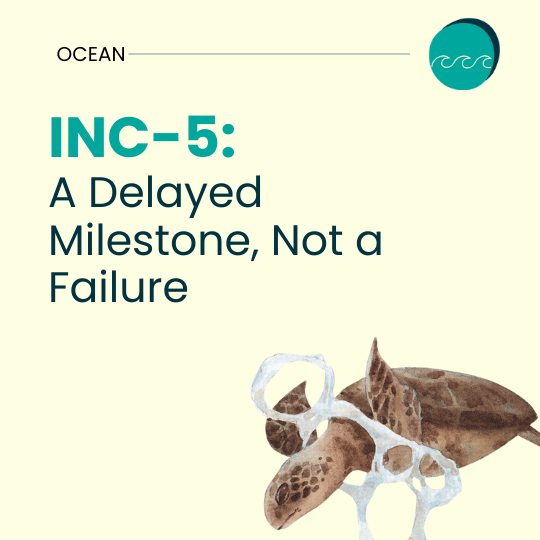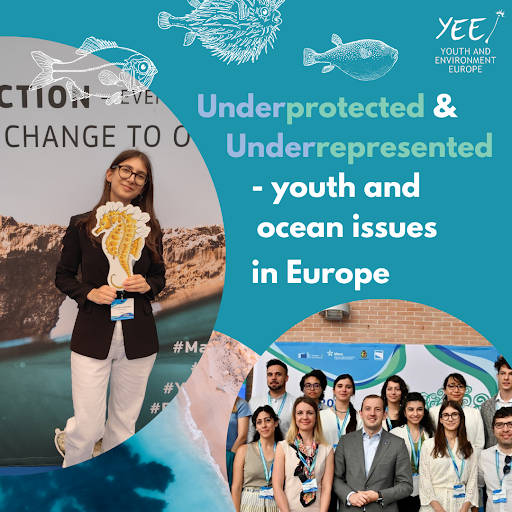
Written by
Stavriana Neokleous
Contents
Share this article
Sources
- Wardle, C. S. (1986). Fish behaviour and fishing gear. In The behaviour of teleost fishes (pp. 463-495). Boston, MA: Springer US.
- Steadman, D., Thomas, J. B., Villanueva, V. R., Lewis, F., Pauly, D., Palomares, M. L., … & Collinson, T. (2021). New perspectives on an old fishing practice: Scale, context and impacts of bottom trawling. Our Shared Seas, Report, 44.
De Groot, S. J. (1984). The impact of bottom trawling on benthic fauna of the North Sea. Ocean management, 9(3-4), 177-190.
Hiddink, J. G., Kaiser, M. J., Sciberras, M., McConnaughey, R. A., Mazor, T., Hilborn, R., … & Jennings, S. (2020). Selection of indicators for assessing and managing the impacts of bottom trawling on seabed habitats. Journal of Applied Ecology, 57(7), 1199-1209.
Parker, R. W., Blanchard, J. L., Gardner, C., Green, B. S., Hartmann, K., Tyedmers, P. H., & Watson, R. A. (2018). Fuel use and greenhouse gas emissions of world fisheries. Nature Climate Change, 8(4), 333-337.
Paradis, S., Goñi, M., Masqué, P., Durán, R., Arjona‐Camas, M., Palanques, A., & Puig, P. (2021). Persistence of biogeochemical alterations of deep‐sea sediments by bottom trawling. Geophysical Research Letters, 48(2), e2020GL091279.
Clark, M., & Tilman, D. (2017). Comparative analysis of environmental impacts of agricultural production systems, agricultural input efficiency, and food choice. Environmental Research Letters, 12(6), 064016.
European Parliament and the Council of the European Union. (2008). Directive 2008/56/EC of the European Parliament and of the Council of 17 June 2008 Establishing a Framework for Community Action in the Field of Marine Environmental Policy (Marine Strategy Framework Directive). Official Journal of the European Union, L 164, 19-40.
Scholaert, F. (2023). Action plan to protect marine ecosystems for sustainable fisheries. European Parliamentary Research Service.
What is Bottom Trawling?
Fisheries are an essential resource, supporting human well-being and sustaining the livelihoods of billions of people worldwide, especially in coastal communities. As a major economic sector, fisheries have profound socio-political and environmental impacts. Various fishing techniques are employed globally, each selected based on factors such as the target species, fish behaviour, location, and timing. Bottom trawling is a widespread fishing practice which accounts for approximately 26 per cent of the total fish catch within the Exclusive Economic Zones (EEZ) and on the high seas.
An exclusive economic zone, as prescribed by the 1982 United Nations Convention on the Law of the Sea, is an area of the sea in which a sovereign state has exclusive rights regarding the exploration and use of marine resources, including fishing.
This practice is especially prevalent in Europe, North America, and East Asia, where it is used to harvest a variety of marine species, including cod, shrimp and squid. Bottom trawling involves dragging a weighted net or a rigid frame along the ocean floor, a method that is often confused but is distinct from pelagic trawling, which targets fish in the water column.
Environmental impacts
Originating in the United Kingdom during the 1300s, bottom trawling underwent significant industrialization in the 20th century due to advancements in technology. Over time, various trawling gear, including beam trawls and otter trawls, have been developed to suit different environments and species, impacting the environment in diverse ways. Despite its economic advantages, bottom trawling is contentious due to its considerable environmental and ecological impacts. It is linked to several major threats to biodiversity, such as the overharvesting of target species, bycatch of non-target species, and the destruction of seabed habitats. Studies have shown that this method reduces marine species diversity and biomass, often favouring short-lived species, which disrupts the ecosystem’s food web and functioning. This disruption can lead to a decrease in prey availability for commercially important fish.
The practice of bottom trawling is also under scrutiny for its contribution to greenhouse gas emissions. Fisheries collectively use about 40 billion litres of fuel annually, generating approximately 179 million tonnes of CO2-equivalent emissions, which accounts for 4% of the global food production emissions. Among these, bottom trawling is particularly harmful, as it releases carbon dioxide stored in the seafloor into the atmosphere, contributing to global warming. Without bottom trawling, this carbon could be safely stored under the sea bed. Research from 2021 found that continuously trawled areas at depth of 500 metres has 30% less organic carbon in the sediment at similar depths where trawling was banned for just two months. This 30% reduction is significant, as it showcases how bottom trawling can drastically deplete organic carbon that would otherwise remain sequestered in marine sediments. Additionally, an older study indicated that bottom-trawl fisheries emit nearly three times more greenhouse gases compared to non-trawl fisheries, furtherly highlighting the serious impact on climate change.
Socio-economic impacts
The socio-economic effects of bottom trawling are varied and significant, though comprehensive formal documentation is limited. A recent report from Steadman and others highlights key areas of impact, including economic consequences, social conflicts, food security, harbour conditions, and health and safety. While bottom trawling can provide affordable fish, its economic impact is felt differently across various communities. It often depletes resources that small-scale fishers depend on, impacting food security for coastal communities. For example, in Southeast Asia small-scale fisheries support millions through direct consumption and aquaculture feed, benefiting lower-income populations. Beyond these economic and social consequences, bottom trawling has also been linked to human rights abuse, particularly in regions with weaker regulatory systems. Regional variations in socio-economic impacts are also evident. For example, Scotland’s Inshore Exclusion Zone (IEZ), established in 1889 to protect small-scale fishers by banning bottom trawling within three miles of the shore, was repealed in 1984. This change allowed bottom trawling to encroach on inshore waters, leading to the collapse of local fisheries, heightened conflicts, and the loss of traditional cultural practices.
Regulatory framework
In response to the significant environmental and socio-economic challenges posed by bottom trawling, Europe has developed a range of regulatory frameworks. The Marine Strategy Framework Directive (MSFD), introduced in 2008, has been a key legislative instrument aimed at protecting the marine environment across Europe, with a focus on achieving Good Environmental Status (GES) of marine waters . However, as environmental pressures have evolved, so too have the strategies to address them. The European Union has now placed increased emphasis on the Marine Action Plan (MAP), which is part of the broader European Green Deal and aims at making fishing practices more sustainable. This includes transitioning to more selective fishing gear, utilising technological innovations to reduce bycatch of sensitive species, and gradually phasing out mobile bottom trawling in all Marine Protected Areas (MPAs) by 2030 .
Call for collective action
While bottom trawling remains a vital part of the global fishing industry, its environmental and socio-economic impacts cannot be overlooked. Recent efforts in Europe, particularly through the latest Marine Action Plan, signal a shift towards more sustainable fishing practices. Greece and Sweden have taken a significant step by banning bottom trawling within all their National Parks and Marine Protected Areas (Greece) and the entirety of their territorial waters (Sweden), setting a positive example that more European countries might follow.
Many NGOs, such as Oceana and Seas at Risk, are at the forefront of efforts to phase out bottom trawling, including this campaign urging the EU to take stronger action against Member States that continue to allow bottom trawling in Marine Protected Areas. Similarly, the Transform Bottom Trawling Coalition is working to build a global movement aimed at restoring ocean health by eliminating destructive fisheries, while protecting the livelihoods of communities who depend on a sustainable ocean. Achieving these goals will require collective actions from all stakeholders – policymakers, industry and consumers – who must work together to phase out destructive practices and ensure sustainability of our oceans for future generations.
As we continue to explore these issues, a series of webinars will follow this article offering deeper insights and discussions on the future of bottom trawling. We invite you to join these sessions and contribute to shaping a more sustainable future for our oceans!
More on ocean-related issues
Our mission
 YEE aims to unite environmental youth non-profit organisations in Europe in order to enhance international cooperation, increase knowledge about the climate crisis, raise awareness of environmental problems and to strengthen participation of youth in environmental decision-making.
YEE aims to unite environmental youth non-profit organisations in Europe in order to enhance international cooperation, increase knowledge about the climate crisis, raise awareness of environmental problems and to strengthen participation of youth in environmental decision-making.
Get in touch
Vinohradská 2165/48
120 00 Praha 2 – Vinohrady
Czech Republic
E-mail: yee@yeenet.eu


Financially supported by the European Youth Foundation of the Council of Europe. The views expressed do not necessarily reflect the official position of the Council of Europe







